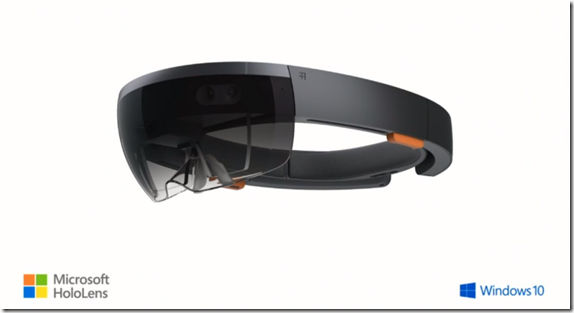| Microsoft's HoloLens - Not Holographic But Interesting |
| Written by Mike James | |||
| Friday, 23 January 2015 | |||
|
At its PR event for Windows 10, Microsoft announced an interesting new interface device - the HoloLens. It brings 3D virtual reality to Windows and is a great, if slightly over-hyped, idea. The HoloLens has been repeatedly referred to as being holographic. Microsoft has even called its built-in processor a holographic processor. So the very first thing to say is that this is not a holographic display and it has nothing at all to do with holography.
So what is the HoloLens? It is an augmented reality (AR) headset that seem to be trying to capture some of the cool surrounding the word "hologram". It projects a stereo pair of images, one to each eye, just like a virtual reality headset. The difference is that the visor is transparent and you can see the 3D generated image embedded into the natural, real world, view. Notice that this is differs from a virtual reality headset that shuts you off from the outside world - all you can see is the generated 3D image. It is also different from Google Glass, which it is currently being compared to, in that Glass projects a single screen of data into your visual field not a full range 3D image. The actual hardware has a built in CPU, GPU and a special processor which Microsoft has misleadingly named a "Holographic Processing Unit" HPU - this is almost certainly hype. It is also claimed that as well as generating a stereo 3D image it can recognize gestures, gaze and voice input. It also seems to be able to control the transparency of what is projected. So a HoloLens object can be see through or opaque. This makes it possible for the HoloLens to overlay and modify real object. For example, it could image a 3D hole in a real table top or add labeling to a real object. Think of this as adding an alpha channel, i.e. opacity, to the AR generated image. This is probably the key difference between Microsoft's unit and other AR displays. You can see the sorts of applications that Microsoft imagines it being used for in the very over the top promo videos:
There are some unanswered questions. The HoloLens will work without a cable connection - so how does it connect to your machine. There is also the question of how it knows where you are in the room and what your head position is. It needs to know this to work out the 3D stereo image to send to your eyes. It has been suggested that there might be a depth camera like the Kinect involved in this - if so it would mean that it only worked in a room that had been "prepared". The only thing that HoloLens has to do with Windows 10 is that a new API will be included to allow the creation of virtual reality, or "holographic" experiences as Microsoft insists we call it. There will also be a HoloStudio application which will allow you to interactively design and use 3D objects. HoloLens is being hailed as some sort of radical major breakthrough, but there are already very similar virtual reality systems - although perhaps not quite a stylish and not as well integrated into Windows 10. This is an important development in that HoloLens seems to be a workable AR headset and Microsoft promises to deliver it in the same time scale as Windows 10 - i.e. towards the end of this year. As with most new hardware what matters are the applications. Is there a killer AR app that works indoors? Something that makes lots of users want to buy a HoloLens? This is another instance where Microsoft really does need to get developers on board and fast...
More InformationRelated ArticlesWindows 10 Cannot Fail - It's Free The Most Exciting Thing At Google I/O - A Piece Of Cardboard IKEA - Augmented Reality Furniture Ingress, Google's Breakthrough Augmented Reality Game Sight - A Short Movie About Future AR
To be informed about new articles on I Programmer, install the I Programmer Toolbar, subscribe to the RSS feed, follow us on, Twitter, Facebook, Google+ or Linkedin, or sign up for our weekly newsletter.
Comments
or email your comment to: comments@i-programmer.info |
|||
| Last Updated ( Saturday, 24 January 2015 ) |



